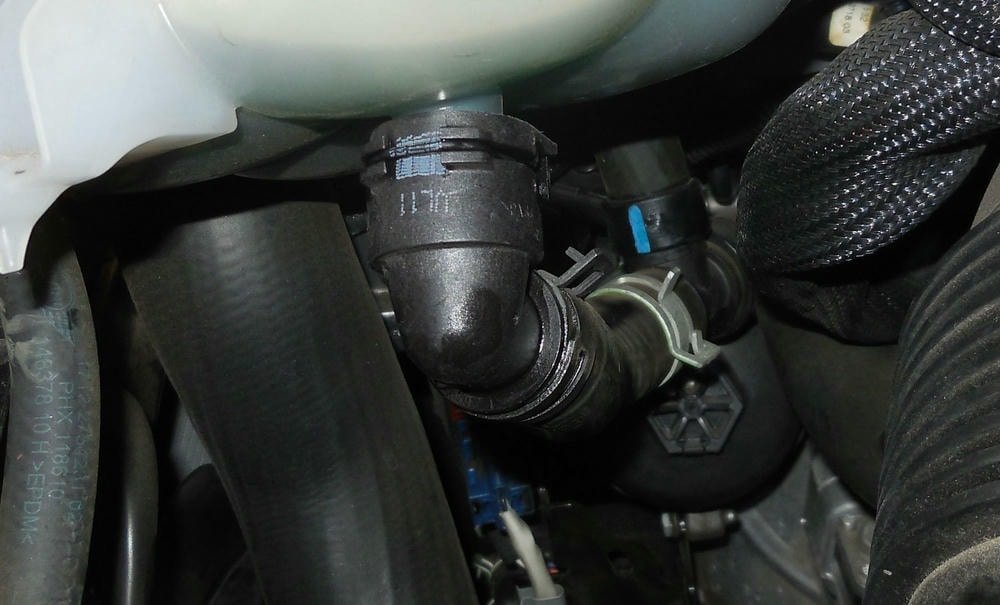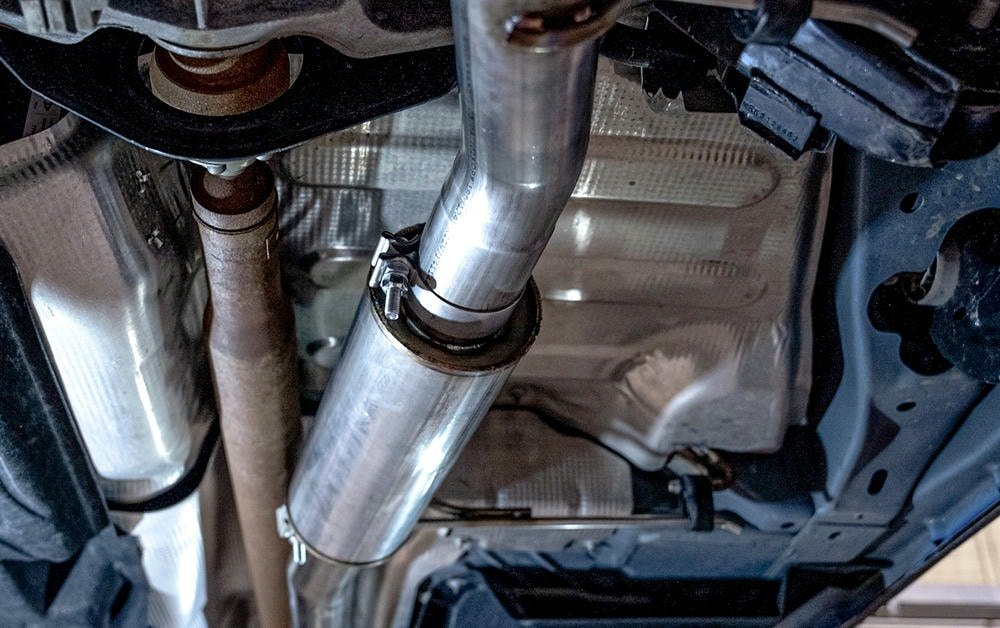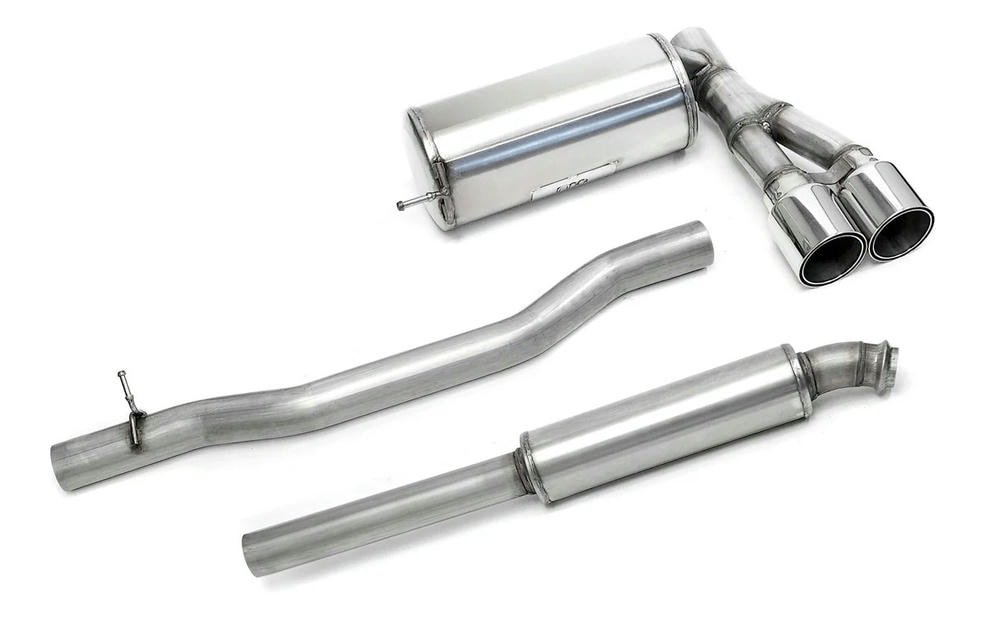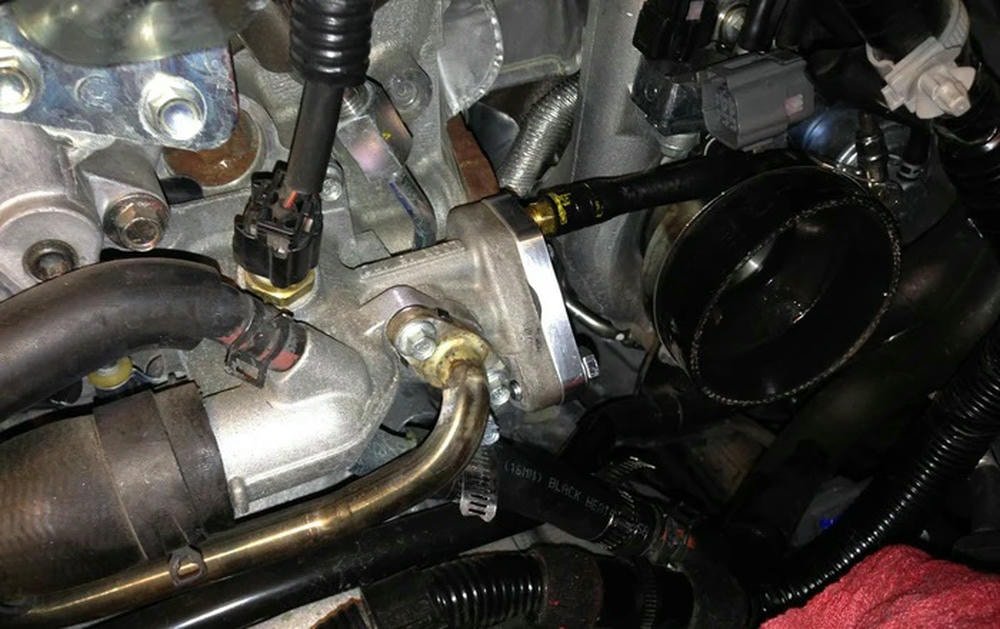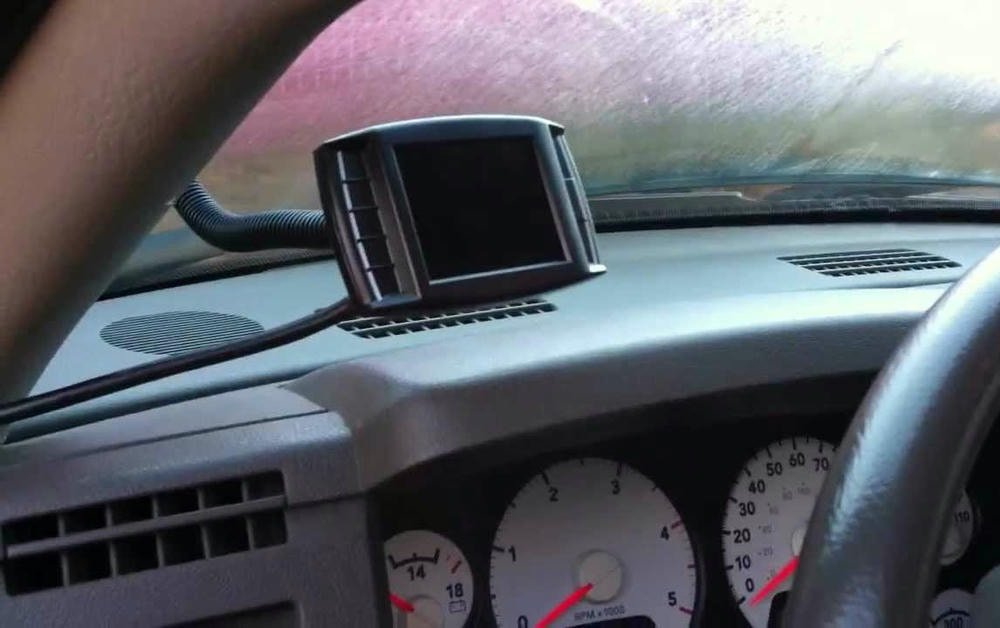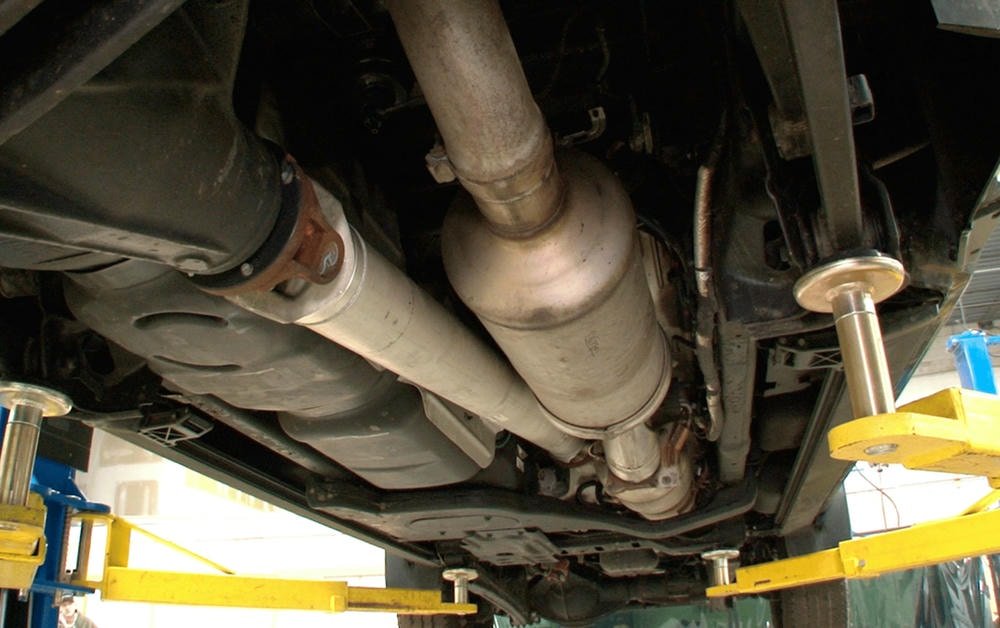Il est essentiel pour les propriétaires de camions diesel de résoudre les problèmes liés au filtre du liquide de refroidissement afin de garantir le bon fonctionnement de leur moteur. A kit de filtre pour liquide de refroidissement aide à maintenir la bonne température en éliminant les particules nocives du liquide de refroidissement.
Le moteur est ainsi protégé contre la surchauffe et les dommages. Mais il arrive que des problèmes surviennent, comme des fuites, des filtres obstrués ou des restrictions de débit dues à une mauvaise installation ou à des pièces défectueuses.
Pour résoudre ces problèmes, il faut savoir trouver et réparer les fuites, remplacer les filtres encrassés et s'assurer que tout est bien ajusté. Il est également important d'utiliser de bonnes pièces et de contrôler régulièrement le système de refroidissement.
De cette façon, les camions peuvent rester sur la route sans avoir à se soucier de l'environnement. problèmes de surchauffe.
We’ll show you how to tackle common issues step by step. Keep reading for helpful tips!
Table des matières
ToggleProblèmes courants liés aux kits de filtres à liquide de refroidissement
Les kits de filtre à liquide de refroidissement sont confrontés à de nombreux problèmes qui peuvent nuire au moteur de votre camion diesel. Il s'agit notamment de fuites dues à des joints défectueux, de filtres obstrués par des saletés, d'une mauvaise circulation du liquide de refroidissement et de pièces qui ne s'emboîtent pas comme elles le devraient.
Fuites et défaillances des joints
Fuites et défaillances des joints are common in camion diesel coolant systems. They happen when seals get old or damaged, letting fuite d'antigel de l'eau. Ce problème peut nuire à la santé du moteur s'il n'est pas résolu rapidement.
Pour trouver les fuites, vérifiez les raccords des tuyaux et le joint de culasse pour voir s'il y a des signes d'antigel à l'extérieur du système. Les chauffeurs de camions doivent également vérifier le refroidisseur d'huile et le noyau de chauffage, car ces pièces peuvent également être à l'origine de fuites.
Réparer les fuites signifie remplacer ou réétanchéifier les pièces qui ne fonctionnent plus correctement. Pour un fuite du joint de culasse, one might need to put in a new gasket. If hose connections are bad, installing new hoses can stop the leaking.
Toujours utiliser des remplacements de haute qualité pour éviter tout problème ultérieur. Ces mesures contribuent au bon fonctionnement du système de refroidissement et protègent le moteur contre la surchauffe ou les dommages.
Filtres bouchés
L'encrassement des filtres d'un camion diesel peut entraîner de graves problèmes. Ils empêchent le liquide de refroidissement de circuler comme il se doit. Cela peut entraîner une surchauffe du moteur et l'endommager. Les propriétaires de camions diesel doivent vérifier leurs filtres régulièrement.
Les signes de colmatage sont des températures élevées du moteur et des performances médiocres.
To fix a clogged filter, one needs to clean or replace it with high-quality components. Choosing the right parts ensures good radiator health and keeps the cooling system working well.
Un entretien régulier permet d'éliminer les contaminants à l'origine des obstructions. La surveillance des niveaux de liquide de refroidissement et l'utilisation d'eau déionisée permettent d'éviter les problèmes futurs.
Restrictions du débit du liquide de refroidissement
Coolant flow issues in a diesel truck’s cooling system can lead to engine overheating and damage. Cela se produit lorsque le liquide de refroidissement ne peut pas circuler librement dans le moteur et le radiateur. Les coupables les plus courants sont des tuyaux bouchés, des conduites pliées ou une pompe à eau défectueuse.
Chacun de ces problèmes ralentit le mouvement de l'antigel, ce qui empêche le moteur de rester froid.
To keep your power stroke diesel running smoothly, always check for kinks in coolant lines and ensure the water pump is working well.
To fix these issues, owners might need to replace bent or blocked hoses and repair or swap out a damaged water pump. Regular system diagnostics help find these problems early. This way, trucks avoid serious damage and stay on the road longer.
Installation ou montage incorrect
Les propriétaires de camions diesel sont souvent confrontés à des problèmes de filtre à liquide de refroidissement pour les raisons suivantes mauvaise configuration ou mauvaise adaptation. Si le filtre n'est pas placé au bon endroit, il peut provoquer des fuites et des problèmes d'étanchéité. réduire la protection du moteur. For someone who drives a power stroke moteur diesel, this mistake can lead to bigger issues down the road.
Nombreux sont ceux qui ont partagé leur expérience en ligne sur des forums de discussion et par le biais de conseils de marketing envoyés par courrier électronique par d'autres conducteurs. Ils insistent sur la nécessité de vérifier attentivement le manuel et de s'assurer que tout s'adapte comme il se doit.
Une erreur fréquente est ne pas utiliser des pièces qui correspondent ce qui est nécessaire pour votre camion. Cette Le décalage peut bloquer le flux du liquide de refroidissement et faire surchauffer votre moteur. Les chauffeurs de camion parlent de trouver des filtres de haute qualité qui correspondent exactement à leur système, en évitant les options de marque qui pourraient ne pas convenir.
Certains ont appris cette leçon à leurs dépens, après avoir été confrontés à des surchauffes de moteur sur de longues distances. Ils recommandent de toujours vérifier les numéros de pièces par rapport aux spécifications de votre camion avant d'acheter quoi que ce soit de neuf.
Dépannage et résolution des problèmes
Addressing coolant filter issues begins with detecting and repairing leaks or substituting impaired components. For those experiencing such challenges, this instruction provides methods to handle common issues like seal leaks, congested filters hindering your engine’s cooling efficiency, or improper installations causing troubles.
Vous acquerrez les connaissances nécessaires pour identifier les problèmes au stade le plus précoce et recevrez des conseils détaillés pour y remédier, qu'il s'agisse de réparer les fuites problématiques ou de s'assurer que les conduites de liquide de refroidissement sont parfaitement structurées pour un fonctionnement sans heurts.
Step into the guide to maintain your diesel truck’s cool and robust performance without any hassle.
Remplacement ou ré-étanchéité du filtre
Fixation coolant filter problems is key in diesel truck maintenance. It helps keep the cooling system running well and protects the engine. Here’s how to replace or re-seal a coolant filter:
- Find the coolant filter. It’s usually located on the engine block or near it.
- Turn off the truck. Make sure it’s cool before you start working.
- Drain some coolant to prevent spills when you remove the filter.
- Use a wrench to loosen and remove the old filter.
- Check the filter seals and gaskets for damage. If they’re worn out, replace them with new ones.
- Get a high-quality replacement filter. This is vital for preventing future leaks and ensuring engine protection.
- Lubricate the new filter’s seal with a bit of fresh coolant. This makes installation easier and helps seal it better.
- Screw the new filter into place by hand first, then tighten it with a wrench but don’t overdo it.
- Refill any coolant that was lost during this process, watching for leaks as you go.
- Start your truck and let it run for a few minutes, then check again for leaks around the filter area.
Taking these steps helps maintain your cooling system and avoid issues like leaks and flow restrictions in your diesel truck’s engine. Regular checks are part of good maintenance habits, ensuring everything runs smoothly and keeps your truck on the road longer without problems related to coolant filters or other systems within your vehicle.
Cleaning or Replacing Clogged Filters
Clogged filters in a cooling system can cause big trouble for diesel truck engines. Left unchecked, they can lead to overheating and serious damage. Here’s how diesel truck owners can tackle this issue.
- Turn off the engine and let it cool. This prevents burns and other injuries.
- Find the coolant filter housing, usually located near the radiator.
- Use a wrench to carefully remove the housing cap. Wear gloves to avoid contact with antifreeze.
- Take out the old filter. If it looks dirty or clogged, it needs replacing.
- Inspect the inside of the filter housing for sediment or debris. Clean it out thoroughly.
- Get a high-quality replacement filter that matches your truck’s specifications.
- Install the new filter into the housing, making sure it fits snugly.
- Reapply sealant on threads if necessary to prevent leaks.
- Screw the housing cap back on tightly but without overtightening, which could crack the housing.
- Refill any lost coolant with the right type of antifreeze for your truck.
- Start the engine and check for leaks around the filter housing area.
Personal experience shows that regular checks on coolant levels and quality can prevent most clog issues before they start affecting performance du moteur significantly. Always follow maintenance schedules outlined by your truck’s manufacturer, using components that are recommended for your specific model ensures longevity of both filter and engine life.
Utilisation high-quality filters reduces contamination risks and extends periods between changes—key in maintaining optimal cooling system function over time.
Adjusting or Re-routing Coolant Lines
Adjusting or re-routing coolant lines in your diesel truck can solve many cooling system problems. This task requires careful planning and execution for effective results.
- Identify the issue with your cooling system. Maybe you’re dealing with leaks, overheating, or coolant flow restrictions.
- Gather necessary tools like wrenches, clamps, and new coolant hoses if needed.
- Drain the coolant from your truck to prevent spills while working on the lines.
- Locate the coolant lines that need adjustment or replacement by checking where they connect to the engine and radiator.
- Use a wrench to loosen the fittings on these lines carefully. Avoid stripping these fittings as this could cause more leaks.
- Inspect the hoses for cracks, hardening, or other damage that might require replacement instead of just re-routing.
- Decide on a new route for your lines that avoids hot spots or areas where they might get pinched or damaged.
- Measure how much hose you will need to complete this new route and cut any new hoses to size.
- Connect your hoses using firm but careful force to ensure tight seals at both ends.
- Secure your newly routed lines away from moving parts with clamps to avoid wear and tear.
- Refill your cooling system with antifreeze, following manufacturer guidelines for mixture ratios.
12.I start the truck and check for any leaks immediately around the work area.
13.Monitor the temperature gauge while idling to confirm proper cooling function is restored.
From personal experience, taking time to carefully plan where each line should go greatly increases success chances when adjusting or re-routing coolant lines in diesel trucks. Ensuring each connection is sealed tightly prevents future leaks and saves time down the road on additional repairs.
Assurer une installation correcte
Ensuring installation correcte of a coolant filter in a diesel truck is crucial for preventing leaks and ensuring the cooling system works well. Many issues with coolant filters stem from incorrect installation. Here’s how diesel truck owners can make sure they install their coolant filters correctly:
- Check the manual: Before starting, it’s vital to read through the truck’s manual and the instructions that come with the coolant filter kit. This ensures understanding of specific requirements.
- Gather all tools: Make sure to have all necessary tools ready. This includes wrenches, sealant for threads, and perhaps even a torque wrench for precise tightness.
- Prepare the area: Clean around the area where the filter will go. Removing dirt or grime prevents contaminants from entering the cooling system.
- Inspect components: Before installing, check all parts of the kit for any damage or defects. This step avoids leaks later on.
- Apply sealant correctly: If using thread sealant on fittings, apply it evenly but avoid overdoing it, which could block flow paths.
- Suivre torque specs: Tighten all bolts and fittings according to the specifications given in the instruction manual to prevent leaks without over-tightening.
- Align properly: Ensure that hoses and lines are aligned correctly to avoid kinks or unnecessary tension that could lead to wear or leaks.
- Check fitment: Verify that the filter sits snugly in its housing and doesn’t move around too much once installed.
- Fill with anti-freeze: After installing, fill up with anti-freeze as recommended by your truck’s manufacturer.
- Bleed air from system: Eliminate any trapped air within the cooling system to avoid hot spots and ensure proper flow.
11.Scroll down slowly as you work through these steps one at a time without rushing.
Preventing Future Issues
Keeping your cooling system in top shape means less trouble down the road. Make it a habit to check things out often and pick only the best parts for your setup.
Maintenance et inspections régulières
Regular maintenance and inspections are crucial for keeping a diesel truck’s cooling system running smoothly. This helps prevent common coolant filter kit issues, such as leaks, clogged filters, and coolant flow restrictions.
Here’s what diesel truck owners need to do:
- Check the coolant level every month. Make sure it’s not too low or too high.
- Inspect the coolant filter for signs of wear or damage. Look closely for any cracks or breaks.
- Clean the system to remove contaminants. Do this every six months to keep everything running well.
- Change the coolant filter at least once a year, or more often if you drive in harsh conditions.
- Look for leaks around the filter and seal areas regularly. Spotting leaks early can save a lot of trouble later.
- Use only high-quality filters and components when making replacements to ensure longer life and better performance.
- Keep an eye on the anti-freeze levels, especially before winter hits, to prevent freezing problems in the cooling system.
- Schedule professional inspections once a year to catch any issues you might have missed.
Following these steps will help diesel truck owners avoid many common problems with their coolant filter kits, ensuring their trucks run cooler and more efficiently for longer.
Using High-Quality Filters and Components
Picking high-quality filters and parts is key for keeping your diesel truck’s cooling system in top shape. High-end filters catch more dirt and last longer than cheaper ones. This means less trouble with leaks or clogs in your coolant filter kit.
Good filters can handle the high demands of a moteur diesel, keeping anti-freeze clean and ensuring smooth operation.
Utilisation sturdy components also prevents coolant flow restrictions that can harm your engine. Quality hoses and seals resist wear, reducing the risk of leaks. In short, investing in top-notch filters and durable parts saves you time and money on future repairs.
It keeps your truck running well, avoiding common problems seen with lower quality options.
Contrôle des niveaux et de la qualité du liquide de refroidissement
Keeping an eye on coolant levels and quality is a must for any diesel truck owner. Low coolant can lead to overheating, while dirty coolant may cause clogs and damage. Use a gauge or dipstick regularly to check the level of anti-freeze in the truck’s system.
If it looks cloudy or has particles floating in it, it’s time for a change. This simple act of monitoring can prevent costly repairs.
A well-maintained cooling system is key to keeping your diesel truck running smoothly.
Make sure the anti-freeze mix is right too; too much water can freeze in winter and too little won’t cool effectively. Changing old coolant helps remove contaminants that build up over time, threatening your engine’s performance.
Opting for high-quality filters catches these impurities before they cause trouble, making regular checks and maintenance a smart habit for every truck driver.
Conclusion
Fixation coolant filter issues needs the right know-how. Mike Johnson, with 20 years in diesel engine maintenance, knows this well. He has degrees in mechanical engineering and automotive tech management.
His work boosts how trucks run and last longer.
Mike says fixing coolant filters helps engines stay cool and work better. He talks about seals, clogs, flow problems, and bad fits being common troubles that hurt truck performance.
He points out safety first. Using good parts that meet standards keeps trucks running safely. Mike stresses telling customers the truth about what they need for their cooling systems.
For everyday use, he suggests checking coolant levels often and choosing quality filters to avoid future problems.
Mike weighs pros and cons: Fixed right, a cooling system works great; ignored, it can cause big damage or overheating.
His final word? Pay attention to your truck’s cooling system before small issues turn bad. This saves time and money for all diesel truck owners.
FAQ
How can I troubleshoot coolant filter problems in my truck’s cooling system?
You can begin troubleshooting coolant filter problems by inspecting your truck’s cooling system for leaks or contaminants. Regular maintenance is key to identifying issues early and fixing them before they escalate.
What are the steps involved in repairing a coolant filter kit?
To repair a coolant filter kit, first identify any leaks in the system and fix them promptly. Next, ensure that the anti-freeze level is optimal and there’s no contaminant present which could affect performance.
Can I receive text message alerts or telephone calls about potential issues with my cooling system?
While not all systems offer this feature, some advanced models do provide opt-in services for text messages or telephone alerts regarding potential issues with your cooling system.
Are there guides available to help me troubleshoot my vehicle’s coolant filter?
Yes, many resources including online forums and mechanic shops provide detailed guides on how to conduct a comprehensive coolant filter troubleshooting process step-by-step.
Why is it important to remove contaminants from my truck’s cooling system regularly?
Contaminants can lead to serious damage over time if left unchecked within your truck driving equipment’s cooling systems. Regularly removing these substances helps keep your engine running smoothly while preventing costly repairs down the line.

